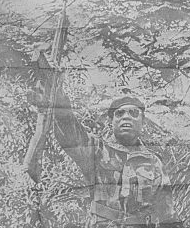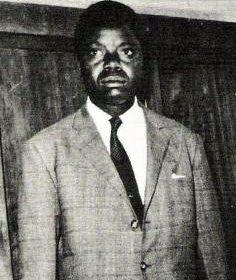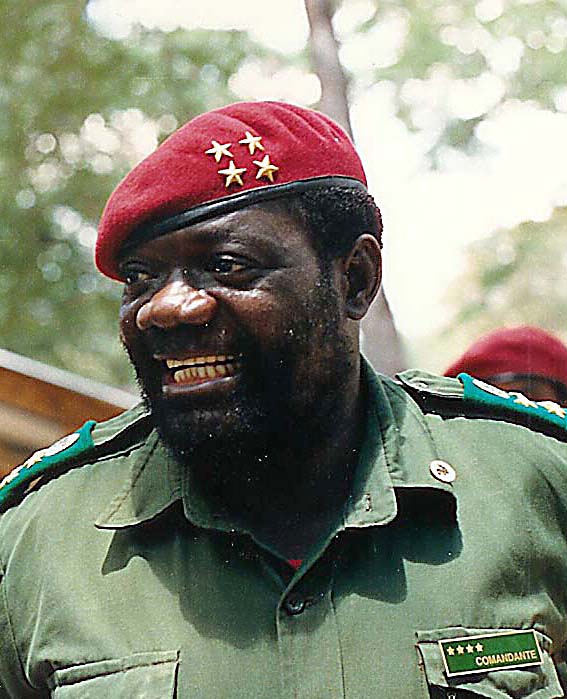|
Katangese Gendarmerie
The Katangese Gendarmerie (french: Gendarmerie Katangaise), officially the Katangese Armed Forces (french: Forces Armées Katangaises, links=no), was the paramilitary force of the unrecognized State of Katanga in Central Africa from 1960 to 1963. The forces were formed upon the secession of Katanga from the Republic of the Congo with help from Belgian soldiers and former officers of the ''Force Publique''. Belgian troops also provided much of the early training for the Gendarmerie, which was mainly composed of Katangese but largely led by Belgians and later European mercenaries. Throughout the existence of the State of Katanga, the gendarmes sporadically fought various tribes and the Armée Nationale Congolaise (ANC). In February 1961 the Gendarmerie initiated a series of operations aimed at suppressing anti-secessionist rebels of the Association Générale des Baluba du Katanga (BALUBAKAT) in North Katanga. The campaign was largely successful, but the fighting led to atrocities an ... [...More Info...] [...Related Items...] OR: [Wikipedia] [Google] [Baidu] |
Congolese National Liberation Front
The Congolese National Liberation Front (french: Front de libération nationale congolaise, FLNC) is a political party funded by rebels of Katanga Province, Katangese origin and composed of ex-members of the Katangese Gendarmerie. It was active mainly in Angola and Zaire during the 1970s. The FLNC was formed in Angola under the leadership of Nathaniel Mbumba, with the goal of expelling Mobutu Sese Seko, the leader of Zaire. The FLNC is best known for its two attempted invasions of Katanga Province (renamed Shaba) in Zaire in 1977 and 1978. These incursions, which threatened Mobutu's regime, sparked two international wars, Shaba I and Shaba II, further complicating the Angolan Civil War. The FLNC became a member of the political life of Zaire after the year 1991, and then later a member of the Democratic Republic of the Congo. Foundation The FLNC originated as the Katangese Gendarmerie, the military of the secessionist State of Katanga during the Congo Crisis. After the defeat ... [...More Info...] [...Related Items...] OR: [Wikipedia] [Google] [Baidu] |
Battle Of Kabalo
The Battle of Kabalo was a battle fought at Kabalo by United Nations peacekeeping forces and Baluba militias from 7 April to 11 April 1961 against mercenaries and the gendarmerie of the State of Katanga, a secessionist state rebelling against the Republic of the Congo in central Africa. The Katangese forces attacked the town as part of a larger offensive meant to restore their authority in northern Katanga which was challenged by the Baluba. A United Nations Operation in the Congo peacekeeping contingent garrisoning Kabalo, acting under the authority of their mandate to prevent civil war in the country, resisted the initial attack and arrested 30 mercenaries in Katanga's employ. Armed Baluba repelled a Katangese ferry carrying troops as well as an armoured train. The next day the ferry returned but was sunk by UN forces. Fighting continued over the next few days between the Baluba and Katangese until the latter withdrew. The battle led to a deterioration of relations be ... [...More Info...] [...Related Items...] OR: [Wikipedia] [Google] [Baidu] |
Shaba II
Shaba II was a brief conflict fought in the Zairean province of Shaba (now Katanga) in 1978. The conflict broke out on 11 May 1978 after 6,500 rebels from the Congolese National Liberation Front (FNLC), a Katangese separatist militia, crossed the border from Angola into Zaire in an attempt to achieve the province's secession from the Zairian regime of Mobutu Sese Seko. The FNLC captured the important mining town of Kolwezi.Widstrand, Carl Gösta, Timothy M. Shaw, and Douglas George Anglin. ''Canada, Scandinavia, and Southern Africa'', 1978. Page 130. Foreign involvement The Mobutist government appealed for foreign assistance and French and Belgian military intervention beat back the invasion, just as in 1977.George, Edward. ''The Cuban Intervention in Angola, 1965-1991: From Che Guevara to Cuito Cuanavale'', 2005. Page 136. The US and Cuba coerced Angola and Zaire into negotiations leading to a non-aggression pact. That ended support for insurgencies in each other's countries ... [...More Info...] [...Related Items...] OR: [Wikipedia] [Google] [Baidu] |
Shaba I
Shaba I was a conflict in Zaire's Shaba (Katanga) Province lasting from March 8 to May 26, 1977. The conflict began when the Front for the National Liberation of the Congo (FNLC), a group of about 2,000 Katangan Congolese soldiers who were veterans of the Congo Crisis, the Angolan War of Independence, and the Angolan Civil War, crossed the border into Shaba from Angola. The FNLC made quick progress through the region because of the sympathizing locals and the disorganization of the Zairian military (''Forces Armées Zaïroises'', or FAZ). Travelling east from Zaire's border with Angola, the rebels reached Mutshatsha, a small town near the key mining town of Kolwezi. Zairian President Mobutu Sese Seko accused Angola, East Germany, Cuba and the Soviet Union of sponsoring the rebels. Motivated by anticommunism and by economic interests, both the Western Bloc and China sent assistance to support the Mobutu regime. The most significant intervention, orchestrated by the Safari Cl ... [...More Info...] [...Related Items...] OR: [Wikipedia] [Google] [Baidu] |
National Liberation Front Of Angola
The National Front for the Liberation of Angola ( pt, Frente Nacional de Libertação de Angola; abbreviated FNLA) is a political party and former militant organisation that fought for Angolan independence from Portugal in the war of independence, under the leadership of Holden Roberto. Founded in 1954 as the União dos Povos do Norte de Angola guerrilla movement, it was known after 1959 as the União dos Povos de Angola (UPA) guerrilla movement, and from 1961 as the FNLA guerilla movement. Ahead of the first multiparty elections in 1992, the FNLA was reorganized as a political party. The FNLA received 2.4% of the votes and had five Members of Parliament elected. In the 2008 parliamentary election, the FNLA received 1.11% of the vote, winning three out of 220 seats. History Origin In 1954, the United People of Northern Angola (UPNA) was formed as a separatist movement for the Bakongo tribe who wished to re-establish its 16th-century feudal kingdom but was also a protest mov ... [...More Info...] [...Related Items...] OR: [Wikipedia] [Google] [Baidu] |
Angolan Civil War
The Angolan Civil War ( pt, Guerra Civil Angolana) was a civil war in Angola, beginning in 1975 and continuing, with interludes, until 2002. The war immediately began after Angola became independent from Portugal in November 1975. The war was a power struggle between two former anti-colonial guerrilla movements, the communist People's Movement for the Liberation of Angola (MPLA) and the turned anti-communist National Union for the Total Independence of Angola (UNITA). The war was used as a surrogate battleground for the Cold War by rival states such as the Soviet Union, Cuba, South Africa, and the United States. The MPLA and UNITA had different roots in Angolan society and mutually incompatible leaderships, despite their shared aim of ending colonial rule. A third movement, the National Front for the Liberation of Angola (FNLA), having fought the MPLA with UNITA during the war for independence, played almost no role in the Civil War. Additionally, the Front for the Liberati ... [...More Info...] [...Related Items...] OR: [Wikipedia] [Google] [Baidu] |
União Nacional Para A Independência Total De Angola
The National Union for the Total Independence of Angola ( pt, União Nacional para a Independência Total de Angola, abbr. UNITA) is the second-largest political party in Angola. Founded in 1966, UNITA fought alongside the Popular Movement for the Liberation of Angola (MPLA) in the Angolan War for Independence (1961–1975) and then against the MPLA in the ensuing civil war (1975–2002). The war was one of the most prominent Cold War proxy wars, with UNITA receiving military aid initially from People's Republic of China from 1966 until October 1975 and later from the United States and apartheid South Africa while the MPLA received support from the Soviet Union and its allies, especially Cuba. Until 1996, UNITA was funded through Angolan diamond mines in both Lunda Norte and Lunda Sul along the Cuango River valley, especially the Catoca mine, which was Angola's only Kimberlite mine at that time. Valdemar Chidondo served as Chief of Staff in the government of UNITA, pro-Wes ... [...More Info...] [...Related Items...] OR: [Wikipedia] [Google] [Baidu] |
Movimento Popular De Libertação De Angola
The People's Movement for the Liberation of Angola ( pt, Movimento Popular de Libertação de Angola, abbr. MPLA), for some years called the People's Movement for the Liberation of Angola – Labour Party (), is an Angolan left-wing, social democratic political party. The MPLA fought against the Portuguese army in the Angolan War of Independence from 1961 to 1974, and defeated the National Union for the Total Independence of Angola (UNITA) and the National Liberation Front of Angola (FNLA) in the Angolan Civil War. The party has ruled Angola since the country's independence from Portugal in 1975, being the ''de facto'' government throughout the civil war and continuing to rule afterwards. Formation On 10 December 1956, in Estado Novo-ruled Portuguese Angola, the underground Angolan Communist Party (PCA) merged with the Party of the United Struggle for Africans in Angola (PLUA) to form the People's Movement for the Liberation of Angola, with Viriato da Cruz, the president of ... [...More Info...] [...Related Items...] OR: [Wikipedia] [Google] [Baidu] |
Angolan War Of Independence
The Angolan War of Independence (; 1961–1974), called in Angola the ("Armed Struggle of National Liberation"), began as an uprising against forced cultivation of cotton, and it became a multi-faction struggle for the control of Portugal's overseas province of Angola among three nationalist movements and a separatist movement. The war ended when a leftist military coup in Lisbon in April 1974 overthrew Portugal's '' Estado Novo'' dictatorship, and the new regime immediately stopped all military action in the African colonies, declaring its intention to grant them independence without delay. The conflict is usually approached as a branch or a theater of the wider Portuguese Overseas War, which also included the independence wars of Guinea-Bissau and of Mozambique. It was a guerrilla war in which the Portuguese army and security forces waged a counter-insurgency campaign against armed groups mostly dispersed across sparsely populated areas of the vast Angolan countrysid ... [...More Info...] [...Related Items...] OR: [Wikipedia] [Google] [Baidu] |
Stanleyville Mutinies
The Kisangani mutinies, also known as the Stanleyville mutinies or Mercenaries' mutinies, occurred in the Democratic Republic of the Congo in 1966 and 1967. First mutiny Amid rumours that the ousted Prime Minister Moise Tshombe was plotting a comeback from his exile in Spain, some 2,000 of Tshombe's former Katangan gendarmes, led by mercenaries, mutinied in Kisangani (formerly Stanleyville) in July 1966. Lieutenant-Colonel Joseph-Damien Tshatshi, the local military commander, was executed. The mutiny was unsuccessful and was crushed. Second mutiny Exactly a year after the failure of the first mutiny, another broke out, again in Kisangani, apparently triggered by the news that Tshombe's airplane had been hijacked over the Mediterranean and forced to land in Algiers, where he was held prisoner. Led by a Belgian settler named Jean Schramme and involving approximately 100 former Katangan gendarmes and about 1,000 Katangese, the mutineers held their ground against the 32,000-man Armé ... [...More Info...] [...Related Items...] OR: [Wikipedia] [Google] [Baidu] |
North Rhodesia
Northern Rhodesia was a British protectorate in south central Africa, now the independent country of Zambia. It was formed in 1911 by amalgamating the two earlier protectorates of Barotziland-North-Western Rhodesia and North-Eastern Rhodesia.''Commonwealth and Colonial Law'' by Kenneth Roberts-Wray, London, Stevens, 1966. P. 753 It was initially administered, as were the two earlier protectorates, by the British South Africa Company (BSAC), a chartered company, on behalf of the British Government. From 1924, it was administered by the British Government as a protectorate, under similar conditions to other British-administered protectorates, and the special provisions required when it was administered by BSAC were terminated.Northern Rhodesia Order in Council, 1924, S.R.O. 1924 No. 324, S.RO. & S.I. Rev VIII, 154 Although under the BSAC charter it had features of a charter colony, the BSAC's treaties with local rulers, and British legislation, gave it the status of a protector ... [...More Info...] [...Related Items...] OR: [Wikipedia] [Google] [Baidu] |
Operation Grandslam
Operation Grandslam was an offensive undertaken by United Nations peacekeeping forces from 28 December 1962 to 15 January 1963 against the forces of the State of Katanga, a secessionist state rebelling against the Republic of the Congo in central Africa. The Katangese forces were decisively defeated and Katanga was forcibly reintegrated into the Congo. The United Nations had tried several times to reconcile the government of the Congo with the State of Katanga, which had declared independence under Moïse Tshombe with Belgian support in 1960. Though initially limiting its actions, the United Nations Operation in the Congo became increasingly impatient towards Katanga and Tshombe, drawing up plans to resolve the situation through force. Tshombe continuously violated agreements he had made with the United Nations and the Congolese government by building up his forces and bringing foreign mercenaries into the conflict. The situation reached a breaking point in December 1 ... [...More Info...] [...Related Items...] OR: [Wikipedia] [Google] [Baidu] |




